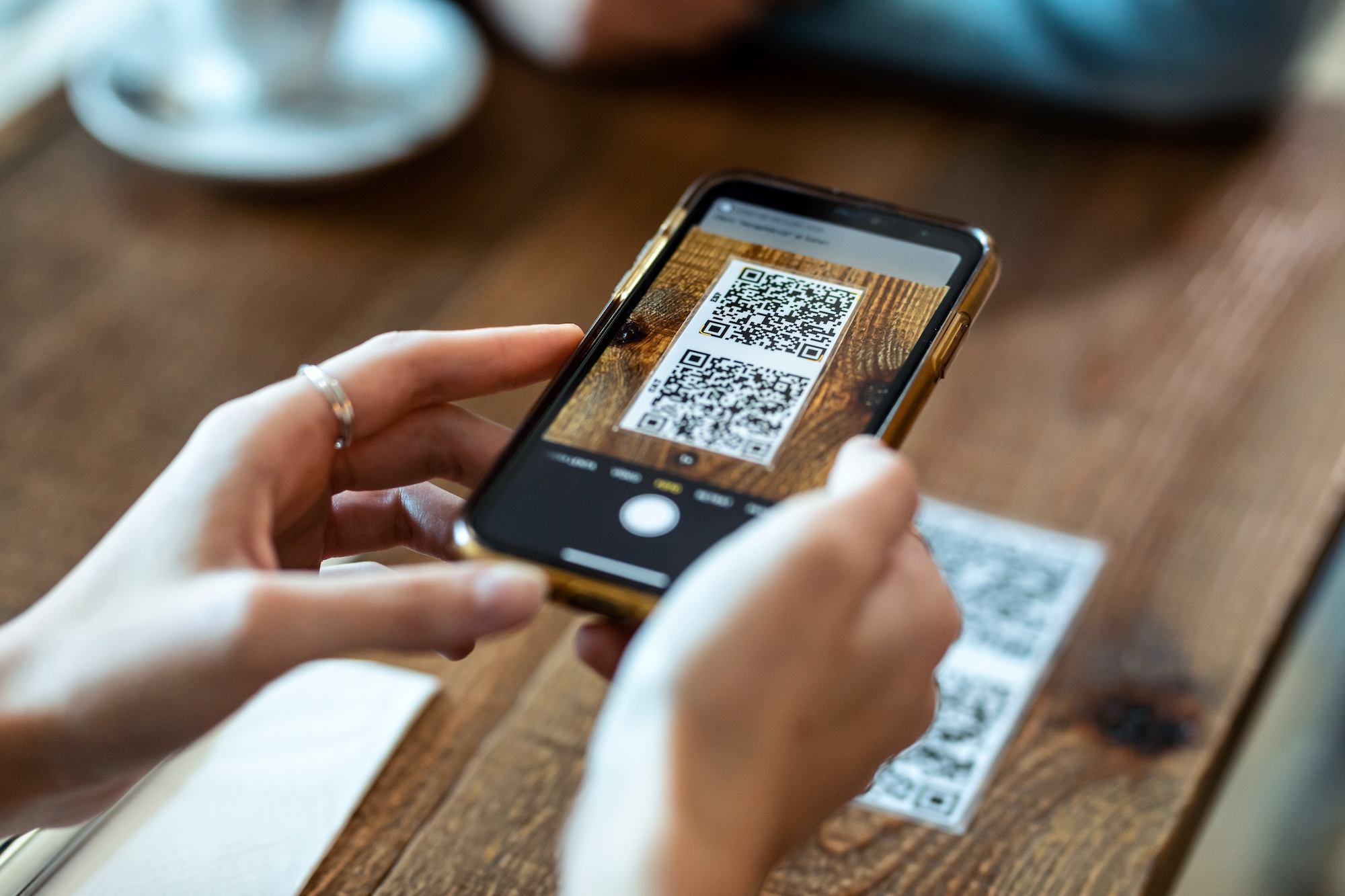QR codes are everywhere – restaurants, stores, and even on product packaging. But they’re not perfect. Common problems like poor design, bad placement, and security risks can frustrate users and hurt your business. Here’s how to fix them:
- Bad Scanning Experience: Use high-contrast designs, proper sizing (e.g., 1"x1" for every 10 inches of distance), and avoid reflective surfaces.
- Physical Damage: Protect codes with UV-resistant materials, coatings, and durable printing.
- Confusing User Instructions: Add clear steps like "Open camera, scan, and follow the link."
- Security Risks: Use dynamic QR codes, display URLs, and monitor for tampering.
- Broken Links: Regularly test static codes and renew subscriptions for dynamic ones.
Quick Fixes Table:
| Problem | Solution |
|---|---|
| Poor Scanning | High contrast, proper size, no glare |
| Physical Damage | Protective coatings, durable materials |
| Confusing Usage | Clear instructions, visible call-to-action |
| Security Concerns | URL previews, tamper-proof designs |
| Broken Codes | Test links, update expired codes |
UX Project Challenge 12: Accessibility, QR Codes and Retail CX
Fix Common QR Code Scanning Problems
QR code scanning issues can disrupt payment transactions, potentially leading to lost sales. Ensuring proper implementation and conducting regular tests can make transactions more reliable. One of the first steps to address these issues is to focus on the physical condition of the QR code itself.
Fix Physical QR Code Damage
Physical damage is a common threat to QR codes, especially in high-traffic areas where they are frequently used for payments. While QR codes are designed to recover up to 30% of damage through error correction, prevention is always the better approach.
Here are some ways to protect QR codes:
- Use UV-resistant materials for outdoor displays to prevent fading.
- Apply protective coatings to guard against moisture and scratches.
- Print on durable, high-quality materials to withstand wear and tear.
- Choose appropriate error correction levels based on the environment where the code will be used.
"I’ve seen people creating QR Codes with a black or dark background and a white or lighter foreground. It may look great in some design scenarios, but they can’t be scanned with all QR Code scanner apps. A lot of apps for scanning your QR Code expect the code to have a darker contrast to the background, so if you scan a codes with a white foreground it will not work for everyone." – William Taylor, Career Development Manager at VelvetJobs [5]
Correct QR Code Size and Location
The size and placement of a QR code can significantly impact its scan rate. Branded QR codes, for example, have been shown to increase scans by 80% [6].
| Distance from Code (inches) | Minimum Size Required (inches) |
|---|---|
| 10 | 1 x 1 |
| 20 | 2 x 2 |
| 30 | 3 x 3 |
| 40 | 4 x 4 |
Key guidelines for size and placement:
- Ensure the code is at least 0.8 x 0.8 inches, scaling up using a 10:1 distance-to-size ratio for optimal scanning [1].
- Add a quarter-inch white border around the code to improve readability [7].
- Place QR codes at eye level for easy access.
- Avoid placing codes on reflective surfaces or in poorly lit areas.
A great example of effective QR code placement comes from Heinz’s sustainability campaign. QR codes were placed on product bottles at ideal sizes and locations, making it easy for customers to scan. This effort resulted in high engagement, with customers scanning the codes to make environmental pledges while Heinz committed to planting trees [7].
Fix QR Code Design Problems
Improving QR code payment systems isn’t just about durability; the design plays a huge role in how effectively they work. Poorly designed QR codes can frustrate users and lead to lower scan rates.
Improve QR Code Contrast
The contrast between a QR code and its background is a major factor in how easily it can be scanned. Research suggests that a minimum contrast ratio of 55% between the code and its background is necessary for reliable scanning [12].
Key tips for better contrast:
- Use dark QR codes on light backgrounds or light codes on dark backgrounds.
- Ensure the background color around the entire code is consistent.
- Avoid gradients or blended colors that can obscure the code’s modules.
- Keep the quiet zone (margin) around the code in the same background color.
"The contrast between the QR Code and its background should be sufficient to ensure easy scanning. High contrast, such as black QR Codes on a white background, is typically recommended for best results." – Ektha S, Senior Content Marketer, Uniqode [11]
While contrast is critical, simplifying the design can further improve usability.
Simplify QR Code Designs
A QR code should strike a balance between looking good and working well. Overly complicated designs – no matter how visually appealing – can reduce scanning success.
| Design Element | Best Practice | Common Mistake |
|---|---|---|
| Logo Placement | Place in the center only | Using multiple logos |
| Color Usage | Stick to two contrasting colors | Using gradients or too many colors |
| Pattern Design | Use clear, simple modules | Intricate patterns that interfere |
| Background | Solid, light color | Busy patterns or textured backgrounds |
A great example of this was Burger King’s campaign during the 2020 MTV Video Music Awards. They used QR codes with clean, simple designs that incorporated brand elements without sacrificing scannability. The result? Increased app downloads and successful offer redemptions [8].
Design tips for better functionality:
- Keep the code structure clear with uniform module shapes.
- Use a single logo, centered and appropriately sized to avoid interference.
- Choose the right error correction level based on the complexity of the design.
- Test your QR codes regularly to ensure they work as intended.
Even small design mistakes can make a QR code harder to scan. Regular testing and thoughtful design adjustments can make all the difference.
Add Clear User Instructions
Even the most perfectly designed QR codes can fall short if users don’t know how to use them.
Add Step-by-Step Scanning Guide
Providing clear, step-by-step instructions helps users navigate the scanning process with ease. This not only speeds up transactions but also reduces confusion and the need for support.
Key elements to include in your instructions:
- Open your camera app or a QR code scanner.
- Position your device so the QR code is centered in view.
- Explain what will happen after scanning (e.g., redirect to a secure payment page).
- Mention any confirmation indicators, like a receipt or success message.
Keep these instructions concise and prominently displayed. For instance, Planet Fitness does this effectively by pairing their equipment QR codes with clear tutorials for users [13].
"Information telling users what will happen if they scan the code should be as clear and visually prominent as the code itself." – Tanner Kohler, NN/g [1]
Here’s how to make your instructions stand out:
| Instruction Component | Good Practice | Poor Practice |
|---|---|---|
| Call to Action | "Scan to pay – Takes you to secure checkout" | "Scan here" |
| Visual Guidance | Simple diagram showing phone placement | Text-only instructions |
| Next Steps | "You’ll see a payment confirmation screen" | No indication of what happens next |
| Help Options | "Need assistance? Ask our staff" | No support information provided |
Pairing clear instructions with strong visual cues ensures users feel confident about scanning.
Make QR Codes Easy to Reach
Where you place your QR codes can make or break the user experience. Proper positioning ensures they’re easy to access and scan in different environments.
Best practices for placement:
- Place codes between waist and chest height for standing users.
- Ensure the code is in a clear, unobstructed area.
- Provide enough room for users to comfortably scan without interference.
Walmart’s self-checkout stations are a great example of smart placement. They display payment QR codes on both the screen and keypad – exactly where customers naturally focus during checkout [1].
Other brands have also nailed this. America’s Test Kitchen places QR codes next to recipe steps in their kids’ cookbook, making digital tutorials easy to access [13]. Similarly, Estée Lauder strategically positions QR codes near product displays, pairing them with simple scanning instructions to encourage shoppers to engage with their makeup tutorials [13].
sbb-itb-8c45743
Strengthen QR Code Security
While ensuring QR codes are physically durable and visually clear is important, securing them against misuse is equally critical for a smooth payment experience. QR code payments are widely used, with 89 million Americans scanning them in 2022 – a 26% jump from 2020. However, security remains a major concern, as 71% of users report difficulty distinguishing real QR codes from fake ones [16]. This highlights the urgent need for stronger protections.
Prevent QR Code Phishing
Phishing attacks using QR codes spiked by 51% in September 2023 [17]. These scams often redirect users to fake payment pages designed to steal personal and financial information.
To safeguard payment QR codes, consider implementing these measures:
| Measure | Method | Benefit |
|---|---|---|
| Visual Authentication | Add company logo and branding | Helps users recognize genuine codes |
| URL Preview | Display destination URL below QR code | Allows verification before scanning |
| Physical Protection | Use tamper-evident materials | Reveals if codes have been altered |
| Regular Monitoring | Inspect codes for tampering | Ensures ongoing code integrity |
"By their very nature, QR codes are not human-readable. Therefore, the ability to alter a QR code to point to an alternative resource without being detected is simple and highly effective."
- Alex Mosher, Global Vice President, MobileIron [15]
These steps bolster earlier improvements by ensuring QR codes remain secure and trustworthy.
Add Anti-Fraud Protection
Security becomes even more important when 34% of consumers express little concern about QR code safety [14]. To address this, advanced features can significantly reduce risks:
- Dynamic QR codes that support remote updates and monitoring
- Multi-factor authentication for high-value transactions
- Real-time scanning verification to detect anomalies instantly
- Digital signatures to confirm code authenticity
"The biggest threat by volume that uses QR codes are email messages or attachments with QR codes leading to password phishing sites."
- Randy Pargman, Senior Director of Threat Detection at Proofpoint [4]
For even greater protection, advanced security measures can be integrated. For example, Secured Payments employs real-time transaction monitoring, secure payment gateways, automated fraud detection, and encrypted data transmission. The FBI’s 2021 warning about QR code vulnerabilities [16] underscores the importance of these strategies. By adopting these measures, businesses can ensure safer transactions and maintain customer confidence.
Keep QR Codes Working
Keeping QR codes functional is key to ensuring smooth payment processing. When QR codes fail or become inactive, it can lead to frustration and a loss of trust from customers.
Replace Outdated QR Codes
Static QR codes can stop working if their linked websites are no longer active or if the URLs break [18]. To avoid this, it’s important to have a plan in place to replace outdated codes.
| QR Code Type | Maintenance Needs | Suggested Actions |
|---|---|---|
| Static Codes | Verify links regularly | Check URLs monthly |
| Dynamic Codes | Manage subscriptions | Monitor expiration dates |
| Printed Materials | Inspect physical copies | Include a backup shortened URL |
Dynamic QR codes rely on active subscriptions to function. If the subscription expires, the code will stop working [18]. To avoid disruptions:
- Set reminders for subscription renewals.
- Automate monitoring whenever possible.
- Keep payment details up to date.
- Maintain a record of where each QR code is used and its purpose.
According to Nielsen Norman Group, "Once a QR code is put out in the world (especially in physical print), it cannot be taken back." [1]
Here’s an example: A QR code printed on a 2019 event flyer was still active in 2023, but it directed users to an outdated page [1]. Regular updates and testing can prevent situations like this and keep QR codes functioning as intended.
Check QR Codes Regularly
Once updates are made, it’s essential to test QR codes routinely to confirm they work across different environments. A consistent testing schedule should include:
-
Weekly Scanning Tests
Test the codes on various devices, in different lighting conditions, and at multiple distances. This ensures they perform reliably in all situations [9][10]. -
Monthly Link Verification
Verify that the destination URLs are active and process payments as expected. For example, the Energy Efficiency and Renewable Energy (EERE) organization uses Bitly to manage URLs, allowing quick updates when links need to be redirected [19]. -
Physical Maintenance
Protect printed QR codes with lamination or a durable coating to prevent wear and tear [18]. Replace damaged codes immediately.
For a more advanced approach, tools like Secured Payments offer analytics to monitor how often QR codes are scanned and whether transactions are successful. This kind of tracking helps spot problems early, minimizing disruptions for customers.
Nielsen Norman Group also recommends, "Old codes should redirect to a relevant page that explains that the window has passed but provides easy access to current information related to the original purpose of the code." [1]
Conclusion: Better QR Code Payment Systems
To create a dependable and efficient QR code payment system, businesses need to focus on improving user experience, ensuring security, and maintaining reliable operations. With QR code payments driving a shift in how transactions are handled – and the market growing at an annual rate of 16.9% through 2030 [2] – addressing these areas is crucial to fully unlock their potential while overcoming common hurdles.
Here’s a quick breakdown of the key focus areas:
| Focus Area | Action Items | Expected Benefits |
|---|---|---|
| User Experience | Mobile-friendly pages, clear instructions | Faster transactions, fewer abandoned checkouts |
| Security | SSL certification, anti-fraud measures | Safer transactions, stronger customer trust |
| Maintenance | Regular testing, prompt updates | Reliable service, consistent performance |
With 85% of customers abandoning overly complex checkout processes [21], streamlining interfaces and providing straightforward instructions should be a top priority.
Moreover, the U.S. Faster Payments Council’s March 2025 report [3] highlights critical challenges like system integration and device compatibility. To address these, businesses should:
- Offer browser-based payment solutions to avoid requiring app downloads [20].
- Ensure backup payment methods are available to tackle technical issues [20].
- Train staff to effectively manage payment-related problems [21].
These steps not only enhance the overall payment experience but also build trust and reliability, ensuring QR code systems remain a preferred choice for customers.
FAQs
How can I make sure my QR codes are safe and avoid phishing scams?
To keep your QR codes secure and avoid falling victim to phishing scams, here are some practical tips to follow:
-
Stick to trusted sources: Only scan QR codes from sources you know and trust. Be extra cautious with codes found in unexpected emails or messages – they could redirect you to harmful phishing sites.
-
Use reliable QR code generators: Choose well-known QR code generators to ensure your codes are safe and free from harmful links. Adding your branding to the QR code can also help users feel more confident about its legitimacy.
-
Secure your content: If your QR code links to sensitive information, consider adding password protection or other security features. Make sure your website has SSL certification to guarantee a secure connection. If your QR codes are displayed in public spaces, inspect them regularly to ensure they haven’t been tampered with.
By following these steps, you can help safeguard your QR codes and create a safer experience for everyone.
How can I design a QR code to make it easy to scan?
To make sure your QR code works seamlessly, here are some practical tips to keep in mind:
- Pick high-contrast colors: Black on a white background works best for visibility.
- Leave enough white space: This "quiet zone" around the QR code prevents scanning errors.
- Size matters: Ensure the QR code is at least 1.6 inches by 1.6 inches for reliable scanning.
- Avoid cluttered backgrounds: Busy or textured surfaces can make the code hard to read.
- Add a clear prompt: Include a message like "Scan to Pay" or "Scan for Info" to guide users.
It’s also a good idea to test your QR code in various lighting conditions and on multiple devices to confirm it scans easily. Ensure the linked content is relevant, quick to load, and functional to avoid frustrating users. Lastly, keep an eye on scan performance over time so you can address any issues as they arise.
How frequently should I check my QR codes to make sure they work properly?
If you’re using QR codes for long-term purposes like signage or printed materials, it’s smart to test them every 3 to 6 months. Regular checks help you spot any issues that might crop up due to evolving technology, updates in scanning apps, or even physical wear and tear, like fading or damage.
Taking these steps ensures your QR codes stay functional, preventing interruptions and keeping your customers’ trust intact.




